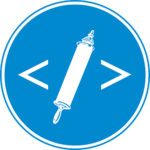Last year I had the opportunity to present a paper when our research group, now called ETCBC, was celebrating its 40th birthday (October 31, 2017). In March I will participate in a symposium on the use of text databases in biblical scholarship, organized at the Fjellhaug International Academic College in Copenhagen. So, if you have been active for over 40 years in this discipline, such occasions cannot but provoke a special blend of remembering the romantic past of punched cards and of considering how to develop new methods in the era of internet. In this paper I will try to contribute to both. In the years past I have become aware or the strong interaction between the production of instruments and the continuing change of methods used for research in biblical texts. The development of computer based instruments and methods has moved from the imitation of instruments used in classical philology (concordances; text editions) to the design of new instruments for critical linguistic research (lexical and syntactic patterns). In our days our discipline moves on again: from linguistic analysis to textual interpretation (text structures and patterns of communication). More or less simultaneously one sees the change of techniques: from punched cards and main frames to CDRoms and query systems, and now to systems of open access cooperation. Within this history of changes the challenge has remained the same: how to combine methods and techniques?
Full text of this contribution by Eep Talstra: Blog_Talstra_mrt2018



It was a delight for us in the workshop to have Eep as keynote speaker. The grand old master came to handle the torch on to the next generation, and we saw this function very well. Dirk Roorda presented his ideas about expanding text fabric, and Christian Højgaard Jensen and Cody Kingham both presented important applications of research in many ways initiated by Eep. For me personally it was an honor to wellcome him at the college.